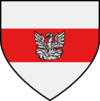Aborzhenia: Difference between revisions
Aborzhenia (talk | contribs) |
Aborzhenia (talk | contribs) |
||
| Line 143: | Line 143: | ||
===The High Kingdom=== | ===The High Kingdom=== | ||
[[File:HenryIII.jpg|150px|thumb|right|Coronation of High King Æthelwin the Liberator, 1205]] | [[File:HenryIII.jpg|150px|thumb|right|Coronation of High King Æthelwin the Liberator, 1205]] | ||
In the beginning of Ruzkov rule over Aborzhenia, religion was not much of a primary issue of conflict. While some skirmishes between followers of Aunhii and Catholics were recorded as occurring early as 840 in the Kilcochran Chronicles, the early Ruzkov administration tended to allow the two main religions to interact and even create a syncretic belief later known as Kerlatism. | In the beginning of Ruzkov rule over Aborzhenia, religion was not much of a primary issue of conflict. While some skirmishes between followers of Aunhii and Catholics were recorded as occurring early as 840 in the Kilcochran Chronicles, the early Ruzkov administration tended to allow the two main religions to interact and even create a syncretic belief later known as Kerlatism. However, after around the year 1200, Yonwjjn III of Gürhelstenwas convinced by Ruzkovian leaders of the Aunhii religion that the presence of outside religions in the realm was dangerous to their faith. As a result, Yonwjjn declared an Inquisition to combat this supposed aggression. Almost immediately after, Catholic and Kerlatist dukes and nobles were deposed from their seats of power, and in some cases even killed. Ruzkovian armies rampaged through the country, destroying Catholic and Kerlatist churches and abbeys. Even the commonfolk were not immune from this violence, and the Catholic church town of Dunsbury-upon-Meathe was razed in 1203. Many Aborzhene nobles (who were mostly of the Aunhii religion themselves) were indignant at this new treatment by their overlords, but in order to avoid rocking the boat and losing their own titles, did not stick up for their Catholic countrymen. This all changed in late November of 1204, when Yonwjjn issued a decree demanding that the Aunhii nobles must levy their peasant armies into battle against the Catholics and Kerlatists. | ||
===Englean Conquests=== | ===Englean Conquests=== | ||
Revision as of 00:42, 10 July 2019
This article is incomplete because it is pending further input from participants, or it is a work-in-progress by one author. Please comment on this article's talk page to share your input, comments and questions. Note: To contribute to this article, you may need to seek help from the author(s) of this page. |
The Federation of Aborzhenia | |
|---|---|
| Motto: In Iustitia, Ibi Libertas In Justice, There Is Freedom | |
| Capital | Edælia |
| Largest | Port Saint Edwards |
| Official languages | Aborzhene, English |
| Recognised regional languages | Eotíannana |
| Ethnic groups | 74% Aborzhene
17% Rukonian 9% Others |
| Religion | Aunhii, Revonic Catholicism, Kerlatism |
| Demonym(s) | Aborzhene |
| Government | Federal semi-presidential constitutional republic |
| Legislature | Parliament |
| National Senate | |
| National Assembly | |
| Population | |
• 2019 estimate | 37,678,375 |
• 2015 census | 37,671,000 |
| Currency | Etherim (ETH) |
| Time zone | UTC+2 (East Ventismar Time) |
• Summer (DST) | UTC+3b |
| Driving side | right |
| Calling code | +127 |
| Internet TLD | .abo |
| |
The Federation of Aborzhenia, commonly referred to as Aborzhenia, is a federal semi-presidential constitutional republic located in Southern Ventismar on the planet of Sunalaya.
Etymology
History
The Heptarchy
Ruzkov Empire Rule
The High Kingdom
In the beginning of Ruzkov rule over Aborzhenia, religion was not much of a primary issue of conflict. While some skirmishes between followers of Aunhii and Catholics were recorded as occurring early as 840 in the Kilcochran Chronicles, the early Ruzkov administration tended to allow the two main religions to interact and even create a syncretic belief later known as Kerlatism. However, after around the year 1200, Yonwjjn III of Gürhelstenwas convinced by Ruzkovian leaders of the Aunhii religion that the presence of outside religions in the realm was dangerous to their faith. As a result, Yonwjjn declared an Inquisition to combat this supposed aggression. Almost immediately after, Catholic and Kerlatist dukes and nobles were deposed from their seats of power, and in some cases even killed. Ruzkovian armies rampaged through the country, destroying Catholic and Kerlatist churches and abbeys. Even the commonfolk were not immune from this violence, and the Catholic church town of Dunsbury-upon-Meathe was razed in 1203. Many Aborzhene nobles (who were mostly of the Aunhii religion themselves) were indignant at this new treatment by their overlords, but in order to avoid rocking the boat and losing their own titles, did not stick up for their Catholic countrymen. This all changed in late November of 1204, when Yonwjjn issued a decree demanding that the Aunhii nobles must levy their peasant armies into battle against the Catholics and Kerlatists.
Englean Conquests
Demographics
Language
Religion
Education
Geography
Climate
Administrative divisions
Aborzhenia is divided into eight Provinces. These Provinces function somewhat autonomously from the National government, controlling their own tax bases, parliaments, justice systems, legislatures, governors, and police systems separate from the federal systems.
| Coat of Arms | Name | Capital | Population |
|---|---|---|---|

|
South Rukonia | Gracewell | 6,405,323 |

|
Mercumbria | Port Saint Edwards | x |

|
Bensmeathe | Wickham-upon-Meathe | x |

|
Æthelsbury | Æthelston | x |

|
Norrland | Norrton | x |

|
Sutton | Mesbury | x |
| Dunston | Dunsbury-upon-Nemes | x | |

|
Fuþarcia | Dornbury | x |
In addition to the eight Provinces, the upscale neighborhood of Edælia also lies partially within the Aborzhene Capital District (ACD), which is legislated directly from the national government. Services like fire and medical care that cannot be effectively governed by the national government are provided by the Metropolitan Government of Port Saint Edwards, the city that surrounds the ACD and that the remainder of Edælia lies within.
Largest cities
Politics
Foreign Relations
Military
Government
Parliament
Political parties




